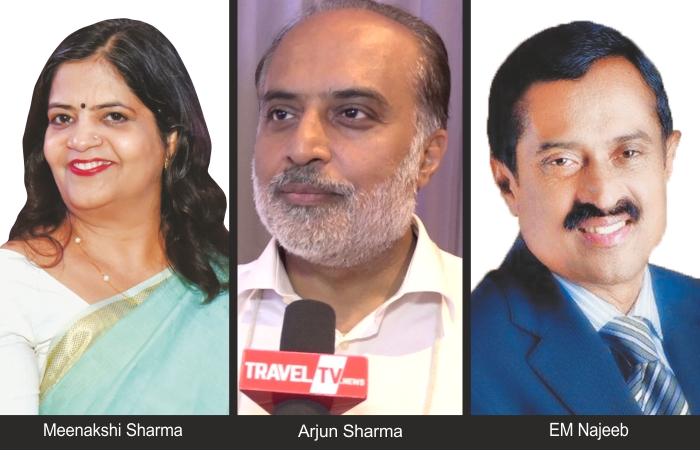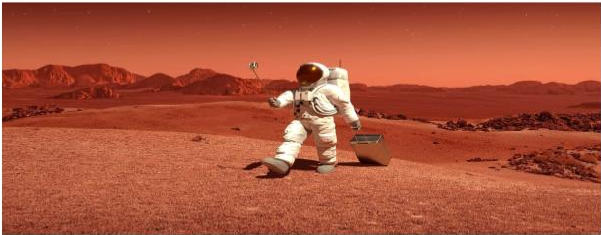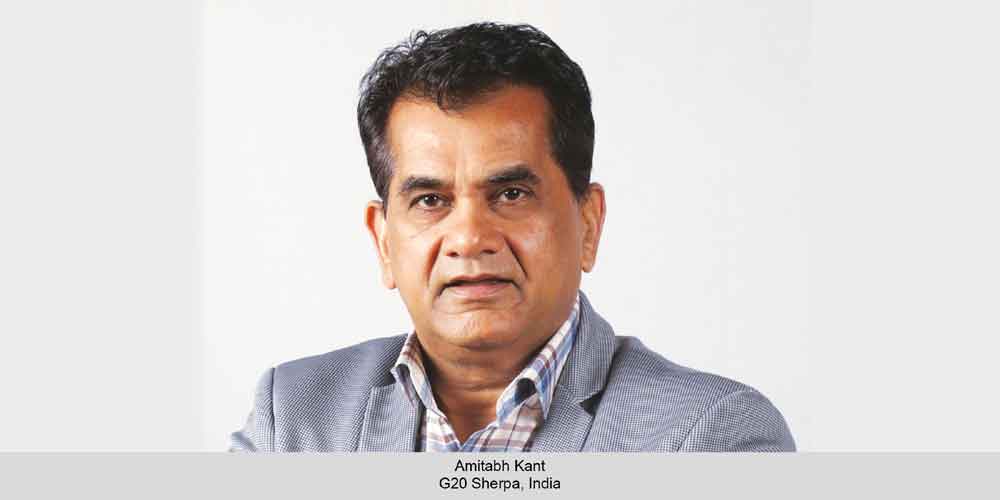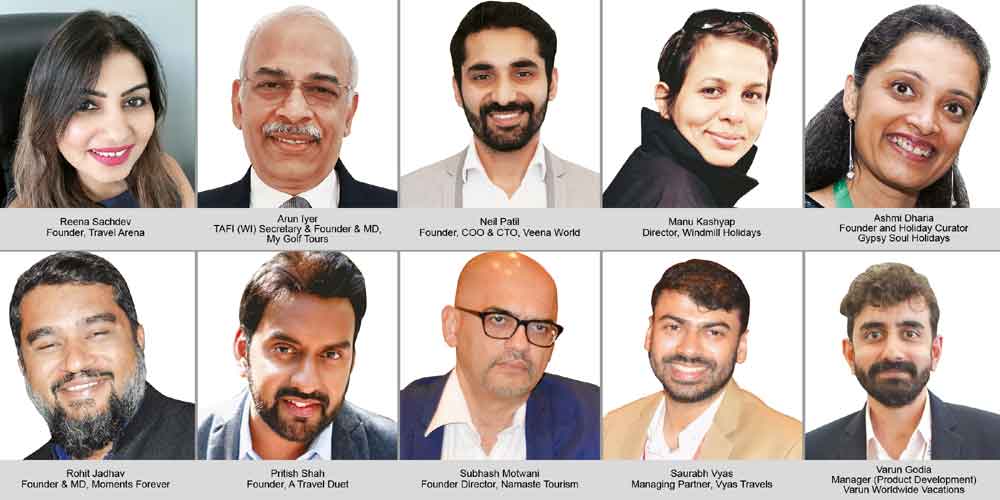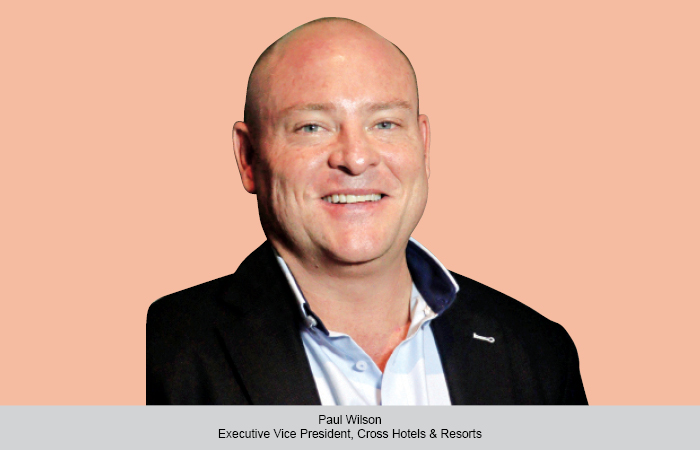As the country struggles to control the pandemic, the tourism industry believes that the best way to promote India now to the rest of the world is to have an autonomous body in collaboration with the Ministry of Tourism. This way, it can play an active role in the decision-making process and assist with the right messaging and actions required in marketing India.
Nisha Verma
The tourism industry is special in its own way, claims Meenakshi Sharma, Director General, Ministry of Tourism (MOT). “It’s not an industry in the traditional sense, where one can define its constituents clearly. It has an ever-expanding definition. But, where there are challenges, there are opportunities and that’s where the need for innovation and inventiveness comes in,” she said.
Challenges to having a tourism board
The first thing we need to do is clearly define this industry, Sharma says. “In fact, the one challenge that we as government face very strongly while pushing this industry is with the unorganised workforce—those who are not part of any regulation nor structure. This is something that needs to be sorted and this pandemic has shown us that the way things are being done right now is not the best. We need to have more cross collection of data, and a structure to deal with the problems without making it regulatory. One thing we want, and the industry agrees, is to be able to offer support without having to regulate. In any industry, a lot of engagement with the government comes with regulation. This is not good for a sector which is ever-changing.”
She added, “We now have a clean slate to work on and we can come up with new ideas. There has been some thought about having a national tourism board, and we have ideas where we can work together on promoting India. We need to think about the proper messaging that needs to go out to the world once we open inbound tourism because India has a variety of products to offer. We’ll have to expand the definition of the tourism board and tourism stakeholders. We must keep regulations out, but facilitation in. There is a need to bring the combined forces of MOT, state tourism boards, and the industry together.”
Taking a cue from Kerala
Claiming that Kerala has been one of the best models for the promotion of tourism in India, EM Najeeb, Senior Vice President, Indian Association of Tour Operators (IATO), says, “The government and the industry came together 20 years ago and formed the Kerala Tourism Society to market the state. We have done 11 marts so far and the MOT followed the same model successfully two years ago with India Tourism Mart (ITM). MOT and the industry are working together very well, but we must think about the future. Does tourism need to be at the same level as it is now, or at a different level? I believe that Indian tourism needs to be re-engineered for greater effectiveness in the future and it should be a greater commercial mode than a bureaucratic and commercial mode. Government monitoring has advantages but at the same time the government also has limitations. We have several examples in the world and within the country where the industry and the government have been working together successfully.”
Affirming the idea of a tourism board, he shares, “The question is whether we need to have a different mode of promotion in India and if we need a tourism promotion board that should be working with MoT. We need to figure if the board will advise the government and have statutory powers so that many things can be decided by it. It needs to be constituted with industry stakeholders, professionals, academicians and trade representations to see if they can work together more effectively. This way the government policies will be implemented effectively and quickly. Several good things have happened in the last few years while working with the ministry. However, during this COVID-19 lockdown period, despite having MOT and NITI Aayog and the government agencies, the industry couldn’t get a financialpackage for tourism. Had there been a board, something could have happened, as it would understand the grievances of the industry. I believe that we should have a board with the constitution of a professional organisation, so that it works as a corporate entity and can look after the entire functioning of Indian tourism under MOT’s guidance and policies.”
All for the board
Arjun Sharma, Chairman, Select Group, claims that he has supported the need for a board since a decade. “I first touched upon it about 15 years ago when I read my father, Inder Sharma’s old notes. Around 45 years ago, roughly when the Mohammad Yunus Committee was set up, some important suggestions were made at that stage, one of which actually fructified— creation of the Tourism Finance Corporation of India because the then leaders of our industry felt the need for a nodal body that could facilitate infrastructure for creating hotels and tourism products. Another strong recommendation was the creation of a national tourism board. It’s been roughly over 40 years and we are still talking about it. However, it’s never too late,” he insists.
Praising the MOT, he said, “The Ministry has also evolved the way it functions over the years. The good part is that over the last decade, we have seen some very good interactions with them. There is a transformation in the way the MOT used to run earlier and the way it runs now—it’s very participative. While the participation is good, there is a lot of feedback with regards to the process of getting consultations, reviews, etc. However, a lot of this does not get into what is called an empowered group of people who work together. It can be called a board, a council, or something else. For example, Invest India is one of the initiatives of the current government, which is an autonomous body looking at investments in India, both domestic and international, and opens the right doors. It is headed by someone who doesn’t come from the Government, is fairly empowered, has regular audience with the powers that be, and has a set of professionals working with him.”
Agreeing with Meenakshi Sharma, he adds, “The problem is that we don’t know what constitutes the industry and how big it is. Before we get into finding solutions, we need to identify who and what we are. These are some issues that we need to work with the government for and create a platform to figure that. I think every problem can be solved if we have a structure. The time has come for the industry to work together with the MOT and see it as an opportunity to reset tourism in India. Every other government and tourism board across the world is doing that, and they are looking at our 24 million tourists.”
However, he adds that it doesn’t mean we only have to focus on domestic tourism. “We have to get international tourists as well. We don’t want the message to imply that India doesn’t want global tourists, owing to the emphasis on domestic tourism. Hence, we must be very careful and it all comes down to the messaging we give out,” says Arjun Sharma.
Sharing his opinion on the workings of the board, he adds, “We need to bring in experienced people from the private sector and work in an empowered structure, where it doesn’t mean visiting the ministry once in two weeks and having a one-hour meeting, but to actually sit there and work for the industry. It is not just about advise anymore, it’s about rolling up our sleeves because we also need to understand the challenges with which MOT works. It is a federal structure. While KTM is a good example, it is difficult to implement it at a national level. At the last CII conference, the talk of a board and a fund came up, and I offered the first cheque of `1 crore from Inder Sharma Foundation. The MOT should create such a corpus, as it has the funds. But the board should not just have an advisory role; this group of selected individuals should work 24×7 on this project. Otherwise, it’s not going to work.”
Not a one-way street
Talking about a partnership with the industry, Meenakshi Sharma says, “Today, what we lack is a structure and commitment that we must work together. Currently, we work together when we need to, and we may not when we don’t need to. We have been thinking about the need to make an empowered tourism board. The last three months of lockdown have given us so many good experiences of working with the industry, state ministries, and the private sector. We are grateful that the industry came together when there was a need to do so. This is the kind of structure we need to formalise. The difficulty is that it is not a well-defined sector. We need to talk to civil aviation, railways, home affairs, health and travel operators. In fact, even outbound tour operators are part of the system. The industry can develop a structure and see what we need to do together, how to do it, and divide the responsibilities. It’s not just about funding. Today, if we talk about the unorganised workforce during the crisis, we can’t tell who all would be out of a job. A lot of people are there at the bottom of the pyramid. Hence, a tourism board will be a good entity to define who the stakeholders are, where do they stand in the pyramid and how do we keep them. They are our workforce and we need them.”
Focus on sustainability
Meenakshi Sharma believes that sustainable tourism is going to be a keyword going forward. “How will it be defined and what will attract the tourists will be part of the messaging by the various service providers. Everybody is going to be a little wary of travel in future, while thinking of physical distancing and hygiene protocols. We have already released the operational requirements, in addition to the SOPs by the Ministry of Health & Family Welfare that is mandatory for all service providers to follow. We are also working on a kind of certification for facilities, destinations, service providers to indicate that they are safe and hygienic in order to create confidence among tourists. Hence, sustainable tourism will be encouraged by the industry. I am sure everybody is looking at it, and so are we,” she added.
Self-regulation an option
Claiming that she is against regulation, Meenakshi Sharma, said, “I believe in partnerships and I would like a database to be created where we can connect with each other. I am against regulation, but all for collaboration. I will be happy if the industry takes that initiative and brings everyone together so that we can talk. Regulations create limitations for the industry to grow. The ministry is not interested in any kind of regulation anymore. The industry should recommend that it should be one of the jobs of the tourism board,”
she suggests.
To this, Arjun Sharma adds, “I think the time has come that the associations take up self-regulation. We need to collect our data better and make sure that if there is a black sheep in our family, we can take care of those deterrents and fine them. Associations like FHRAI, IATO, FAITH, etc, can create that self-regulation. Even for things like rating a hotel, there is no need for the government to do that. The industry can certify them. We need to create the norms. I think we have a great Director General for Tourism, who is pointing us in that direction. We, as an industry should be responsible and do it ourselves. I am glad that the MOT understands the situation and open to creating a new body. It is time that all of us in the private sector put our heads together, leave our egos behind, and create a society that’s an empowered tourism board. It doesn’t mean we have to achieve nirvana in one year. This might take anything from three to seven years to evolve, as all good things take time. There will be some pain, stepping on each other’s toes, and deliberations. But we must start somewhere.”
Asserting the point further Najeeb, says, “We need a complete change from the past and look at a new way of conducting these processes. We have excellent examples in Dubai and Singapore, who have made radical changes in conducting tourism activities in their respective countries. We need to reach that level. The ministry should be formulating policies and the board should be conducting and running the show for the country and that is the only way we can change and grow. Instead of 20 million tourists, we can reach 40-50 million tourists!”
Start a dialogue with the MOT
Commenting on the way forward, Meenakshi Sharma advises, “We need to list down our expectations from the tourism board. Having a tourism board without a target in mind is not a fruitful exercise. Hence, we need an outcome, so that we can propose it to the government. Once we have an outcome, we can look at how it will function, work towards empowerment, funding, its structure and how everybody in the pyramid can get involved. It’s a great idea to have partnerships and collaboration, but it’s not a good idea to have more regulation. We are open to ideas, but we need a structure. The MOT is a very open ministry. We may not be able to do many things but we listen to everyone.”
Medical tourism
Medical tourism has huge potential in India. Under the Ministry of Commerce, the State Tourism Promotion Council (STPC) conducts the Medical Tourism Conclave every year, in at least 4 or 5 places in India, inviting Indian hospitals, suppliers, and approved agents from all over the world to participate. India has a lot of experienced medical professionals and support staff like nurses and paramedical. India can be a medical tourism hub. Today, Singapore and Thailand are known for that. India has so many hospitals accredited by national boards as well as international boards. Around 10-15 years back, people were going from here to London or the US for treatment. However today, people from the entire Middle East, African and European countries come to India. And they will continue to come, as the way we handled our foreign tourists who were stranded in India during the lockdown and sent them back home safely has created a lot of goodwill for us. The Ministry of Commerce and MoHFW shall join hands to promote medical value travel to India at a higher level, along with hospitals and other bodies, which will be India’s strength.
– EM Najeeb
The right messaging for FTAs
We are working on our international messaging and we are going to discuss that with the industry soon. While domestic tourism is important, international tourism is more so as that brings us foreign exchange. There is so much that India has to offer. Right now, the issue is not just messaging, but also border rigidity and visa regulations. We are working with the Ministry of Home Affairs, Ministry of External Affairs and Ministry of Health & Family Welfare so that the moment other countries are ready to send their people, we are ready to welcome them. The other part is dealing with the policy-level issues. We cannot be open to all countries at the same time. The messaging must be about the experiences and about longer duration travel.
– Meenakshi Sharma
Tour operators or brokers?
Tour operators work hard but they get only 25% of the package as the rest goes to hotels and others in the channel. Tour operators work closely with international operators to promote India well and highlight all her destinations which ultimately trickles down to the end travellers. Broker is an unfair word. Today the entire industry – be it hotels, service providers and the ministry – should not only play their own roles, but work as a team to promote the destinations while competing with each other.
– EM Najeeb
Tap the new, nurture the old
I don’t believe that our traditional markets will disappear. We don’t have to put money into them but we still need to nurture them. While China was considered a potential new market, the situation has changed. But Asia is our new source market with Vietnam, Thailand, and Australia as these countries have wealth and we need to bring in tourists from there. The Middle East is going to get affected badly because of a crash in oil prices. But please continue to nurture your existing markets. There may be a short-term dip, but they are the ones we should support more because they have supported us. However, with new markets, I think what people refer to is new messaging, new products and experiences like the great Indian ayurveda story, the Indian Himalaya story, or the Indian spiritual story. There is going to be a change in what people will travel for. Hence, experiences have to be repackaged and repositioned.
– Arjun Sharma
Revamp monuments
I believe that most of our monuments are unfortunately dead monuments. We don’t really animate our monuments the way the western world does. Today, one can pay and hold events, and celebrate special moments at historical monuments across the world and pay for it. However, that cannot happen in India. I think we need to open up our monuments with a fresh set of eyes. Not all, but some monuments in each state can be selected and animated, activated to have more life and soul into them to create an experience.
– Arjun Sharma
PPP model and technology
We are all looking at how to digitise our businesses because that’s how the new customer lives. One has to tech-enable their businesses but that doesn’t mean that people will be redundant. One will still need people behind that technology and today technology is available to everybody at very affordable prices. I think with technology, you will have to create new jobs and new service providers. It’s going to be part of our job culture and you must adapt to it.
– Arjun Sharma
 TravTalk India Online Magazine
TravTalk India Online Magazine

